From the Trenches
Great Lakes Shipwreck Spotting
By SAMIR S. PATEL
Tuesday, August 11, 2015
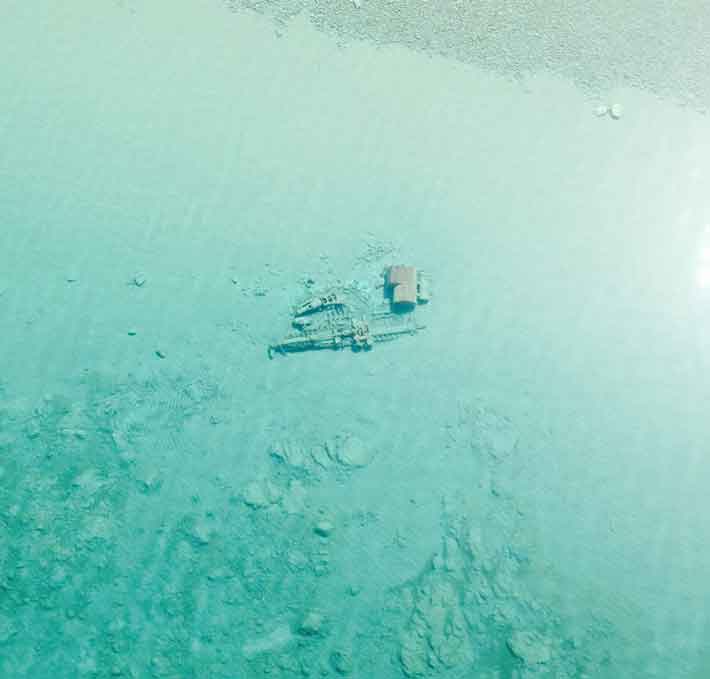 Each spring, once the ice has melted and the chilly waters of Lake Michigan run clear, the history of the Great Lakes becomes visible—to those able to fly over it. As part of a routine patrol, guardsmen from the U.S. Coast Guard snapped photos of a few of the lake’s hundreds of wrecks. Posted online, the haunting photos generated hundreds of comments and dozens of news stories—as well as help in identifying them. Pictured here is Rising Sun, a 133-foot-long wooden steamer that ran aground in 1917. (For more on the maritime heritage of the Great Lakes, see “Shipwreck Alley,” January/February 2015.)
Each spring, once the ice has melted and the chilly waters of Lake Michigan run clear, the history of the Great Lakes becomes visible—to those able to fly over it. As part of a routine patrol, guardsmen from the U.S. Coast Guard snapped photos of a few of the lake’s hundreds of wrecks. Posted online, the haunting photos generated hundreds of comments and dozens of news stories—as well as help in identifying them. Pictured here is Rising Sun, a 133-foot-long wooden steamer that ran aground in 1917. (For more on the maritime heritage of the Great Lakes, see “Shipwreck Alley,” January/February 2015.)
Bronze Age Traveler
By DANIEL WEISS
Tuesday, August 11, 2015
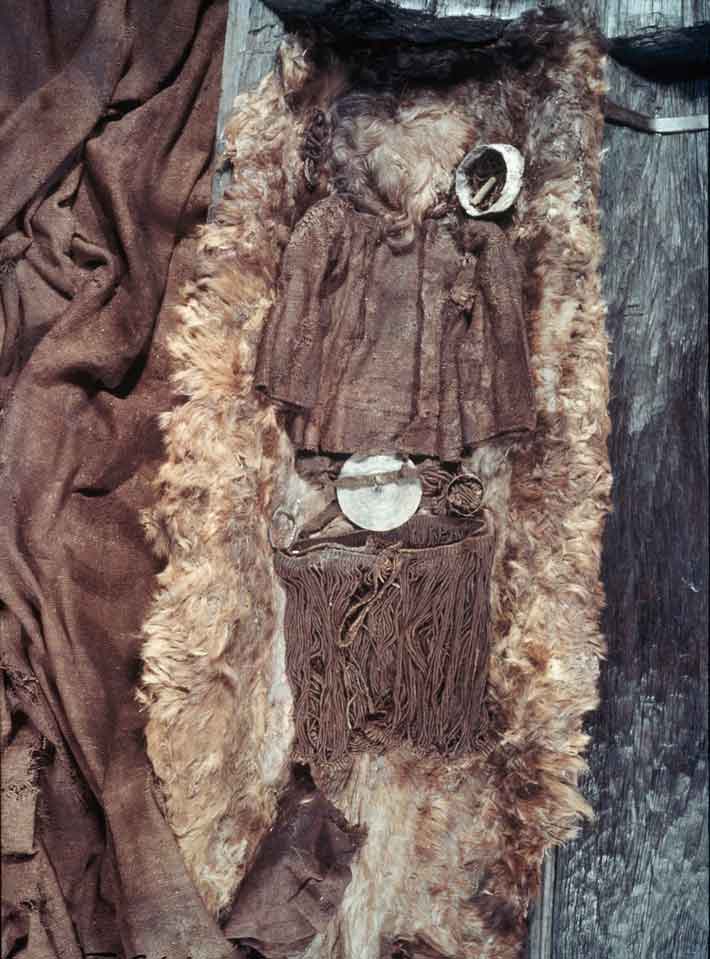 Since her remains were discovered in 1921 near the town of Egtved, Denmark, almost 3,300 years after she died at around 17, the young woman was thought to have been a local, and became known as the “Egtved Girl.” But new research has undermined this assumption.
Since her remains were discovered in 1921 near the town of Egtved, Denmark, almost 3,300 years after she died at around 17, the young woman was thought to have been a local, and became known as the “Egtved Girl.” But new research has undermined this assumption.
Based on the strontium isotope signature of one of the girl’s first molars, which was fully formed by age four, a team led by Karin Frei of the National Museum of Denmark has determined that she could not have grown up on the Jutland Peninsula, where Egtved is located. Instead, she was most likely raised in the Black Forest region of southern Germany, some 500 miles away. There were well established ties between the two areas at the time, and the researchers believe the girl was sent to marry a chieftain in Jutland to further the alliance.
Strontium isotope signatures from the girl’s hair and fingernail provide a detailed record of her travels in the last two years of her life. During this period she appears to have moved from her homeland to Jutland, back to where she grew up, and then to Jutland once again shortly before she died. “This tells us that people in the Bronze Age really moved around,” says Frei, “not only men, but women as well.”
A Rare Bird
By JASON URBANUS
Tuesday, August 11, 2015
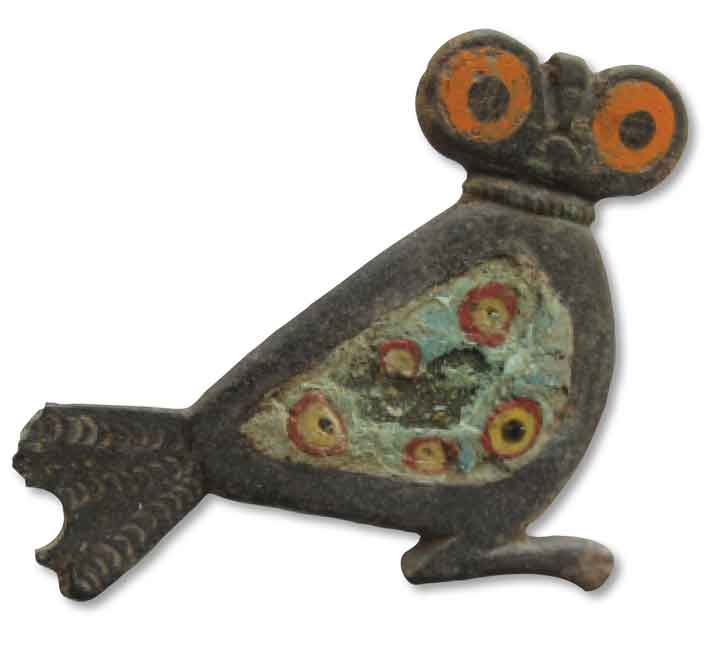 Danish archaeologists investigating the settlement of Lavegaard on the island of Bornholm have uncovered an unusual and exquisite owl-shaped fibula. The 1.5-by-1.5-inch Roman brooch, which dates to the first through third centuries A.D., was discovered by metal detectorists working with the Bornholm Museum. The bronze owl is inlaid with enamel disks and colored glass, which were used to create the enormous orange-and-black eyes. Decorative enameled fibulas are rare in such remote areas of northern Europe, with most concentrated in Roman frontier forts along the Danube or Rhine. This valuable personal item was likely brought back to Bornholm by a local mercenary who had served along the frontier, or was perhaps a gift from a wealthy Roman visiting the island.
Danish archaeologists investigating the settlement of Lavegaard on the island of Bornholm have uncovered an unusual and exquisite owl-shaped fibula. The 1.5-by-1.5-inch Roman brooch, which dates to the first through third centuries A.D., was discovered by metal detectorists working with the Bornholm Museum. The bronze owl is inlaid with enamel disks and colored glass, which were used to create the enormous orange-and-black eyes. Decorative enameled fibulas are rare in such remote areas of northern Europe, with most concentrated in Roman frontier forts along the Danube or Rhine. This valuable personal item was likely brought back to Bornholm by a local mercenary who had served along the frontier, or was perhaps a gift from a wealthy Roman visiting the island.
Atacama’s Decaying Mummies
By JARRETT A. LOBELL
Tuesday, August 11, 2015
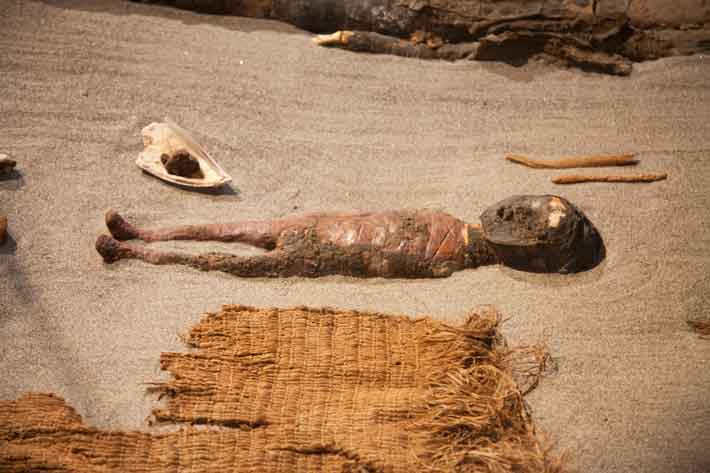 The world’s oldest mummies aren’t found in Egypt, but in the sands of Chile’s Atacama Desert. The oldest dates to an astonishing 5000 B.C., and even the youngest are nearly 5,000 years old. But since the moment they were excavated, they’ve been undergoing changes that even millennia in the ground didn’t bring about.
The world’s oldest mummies aren’t found in Egypt, but in the sands of Chile’s Atacama Desert. The oldest dates to an astonishing 5000 B.C., and even the youngest are nearly 5,000 years old. But since the moment they were excavated, they’ve been undergoing changes that even millennia in the ground didn’t bring about.
The mummies are kept in climate-controlled conditions at the Archaeological and Anthropological Museum of San Miguel de Azapa in Arica, but archaeologist Marcela Sepulveda of the University of Tarapacá recently noticed that their skin was turning black and gelatinous, sure signs of decay. “I wanted not just to study the skin degradation, but also to understand what the agent of degradation was,” she says. So Sepulveda enlisted microbiologist Ralph Mitchell of Harvard University to do DNA testing and chemical analysis to identify the microorganisms and chemical processes involved.
The work revealed that, while the mummies have been decaying for at least a decade, the process seems to have accelerated, perhaps as a result of climate change, despite the museum’s climate-control systems. “The climate in this region has changed from cool and dry to warm and damp, and the increased humidity has caused microbes that are common to all of our skin, but usually get washed off, to grow and damage the mummies’ skin,” says Mitchell. Sepulveda also wonders whether increased agriculture in the region might be affecting the humidity around the museum. The researchers are concerned about the museum’s mummies—and those yet to be found. “I think it’s a critical question,” says Mitchell. “What happens if you find another cemetery full of mummies?”
Off the Grid
By MALIN GRUNBERG-BANYASZ
Tuesday, August 11, 2015
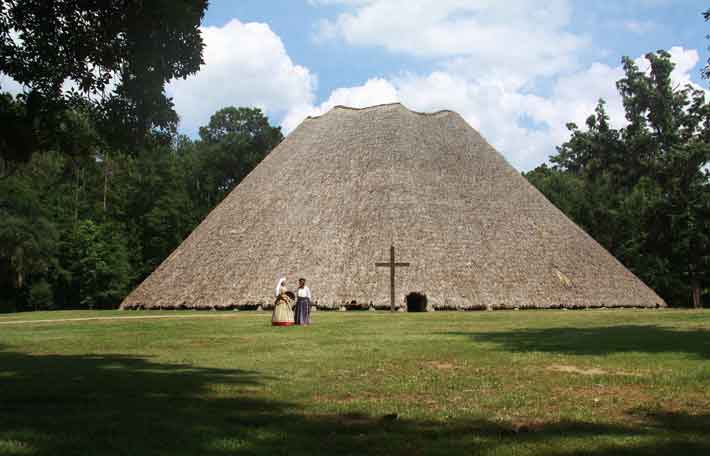 On a broad hilltop in the heart of Tallahassee, Florida, is Mission San Luis, a site with a deep history involving the Apalachee Native Americans and Spanish missionaries. In the mid-1500s, Hernando de Soto visited Anhaica, the capital of the Apalachee, an Indian nation so prominent that mapmakers bestowed its name on distant mountains: the Appalachians. In 1656, the Apalachee chief agreed to move his people a few miles away to Mission San Luis, the capital of Spain’s settlements in western Florida. There, Spanish friars baptized thousands of the Native Americans. Amid conflict between the Apalachee, other Native American groups, the Spanish, and the English, the mission was destroyed in 1704.
On a broad hilltop in the heart of Tallahassee, Florida, is Mission San Luis, a site with a deep history involving the Apalachee Native Americans and Spanish missionaries. In the mid-1500s, Hernando de Soto visited Anhaica, the capital of the Apalachee, an Indian nation so prominent that mapmakers bestowed its name on distant mountains: the Appalachians. In 1656, the Apalachee chief agreed to move his people a few miles away to Mission San Luis, the capital of Spain’s settlements in western Florida. There, Spanish friars baptized thousands of the Native Americans. Amid conflict between the Apalachee, other Native American groups, the Spanish, and the English, the mission was destroyed in 1704.
According to Grant Stauffer, a graduate student at Texas State University, archaeologists consider Mission San Luis unique because, unlike St. Augustine, Spain’s capital in eastern Florida, the village offered a unique cultural mash-up, where Spanish settlers, priests, and soldiers lived and worked side by side with Apalachee families.
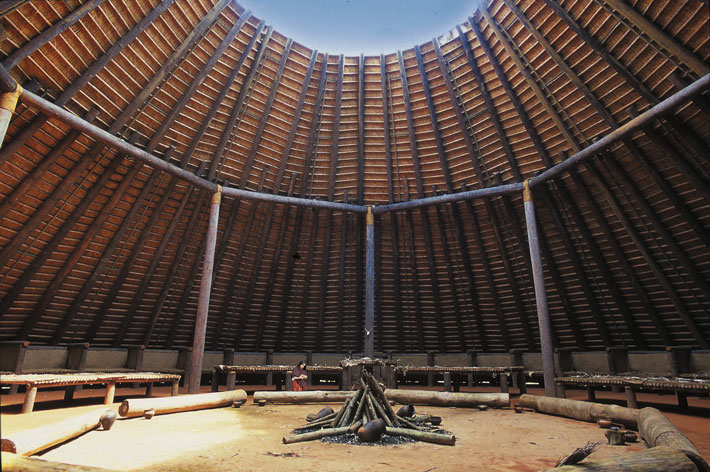 The site
The site
Unlike the grid that dominates St. Augustine, Mission San Luis was laid out using the traditional circular pattern of Native American towns of the region. Covering 60 acres, the site included the Spanish garrison, the central plaza/ball court, a monastery, and the surrounding village. Few remains of these buildings exist today, but the site has been reconstructed on the basis of archaeological finds. Two decades of fieldwork provide Mission San Luis with one of the largest and most diverse collections of seventeenth-century Spanish and Apalachee materials, including nearly a million artifacts.
The primary ceremonial and political center of the Apalachee capital was the council house, which has also been reconstructed, a circular building designed around a central fire, considered one of the largest Native American ceremonial structures in the southeast. In the circular ball court, which features a ceremonial ball pole, the Apalachee played a stickball game tied to political succession. The myth surrounding the game, which was eventually abolished by the Spanish, is considered the oldest recorded myth in North America.
While you’re there
Tallahassee’s rolling hills, classic architecture, and tree-lined streets have the flavor of the Old South. At Lake Jackson Mounds, one can see two mounds made by the ancestors of the Apalachee, with even older examples at the nearby Letchworth-Love Mounds. Visitors can also spend a day exploring the Maclay Gardens, especially in the spring, when the dogwoods and azaleas are in bloom.
Advertisement
Advertisement
IN THIS ISSUE
Features
Golden House of an Emperor
New York's Original Seaport
Cultural Revival
Letter From England
From the Trenches
Bronze Age Ireland’s Taste in Gold
Off the Grid
A Rare Bird
Atacama’s Decaying Mummies
Bronze Age Traveler
Great Lakes Shipwreck Spotting
Early Parrots in the Southwest
The Red Lady of El Mirón
For the Love of a Noblewoman
Blood on the Ice
Under the Rug
What’s in a Name?
A Place to Hide the Bodies
“T” Marks the Spot
As American as Sliced Bacon in a Can
Surely You Joust?
Artifact
The dragon that guarded Xanadu
Advertisement

Recent Issues
-
 May/June 2024
May/June 2024
-
 March/April 2024
March/April 2024
-
 January/February 2024
January/February 2024
-
 November/December 2023
November/December 2023
-
 September/October 2023
September/October 2023
-
 July/August 2023
July/August 2023
-
 May/June 2023
May/June 2023
-
 March/April 2023
March/April 2023
-
 January/February 2023
January/February 2023
-
 November/December 2022
November/December 2022
-
 September/October 2022
September/October 2022
-
 July/August 2022
July/August 2022
-
 May/June 2022
May/June 2022
-
 March/April 2022
March/April 2022
-
 January/February 2022
January/February 2022
-
 November/December 2021
November/December 2021
-
 September/October 2021
September/October 2021
-
 July/August 2021
July/August 2021
-
 May/June 2021
May/June 2021
-
 March/April 2021
March/April 2021
-
 January/February 2021
January/February 2021
-
 November/December 2020
November/December 2020
-
 September/October 2020
September/October 2020
-
 July/August 2020
July/August 2020
-
 May/June 2020
May/June 2020
-
 March/April 2020
March/April 2020
-
 January/February 2020
January/February 2020
-
 November/December 2019
November/December 2019
-
 September/October 2019
September/October 2019
-
 July/August 2019
July/August 2019
-
 May/June 2019
May/June 2019
-
 March/April 2019
March/April 2019
-
 January/February 2019
January/February 2019
-
 November/December 2018
November/December 2018
-
 September/October 2018
September/October 2018
-
 July/August 2018
July/August 2018
-
 May/June 2018
May/June 2018
-
 March/April 2018
March/April 2018
-
 January/February 2018
January/February 2018
-
 November/December 2017
November/December 2017
-
 September/October 2017
September/October 2017
-
 July/August 2017
July/August 2017
-
 May/June 2017
May/June 2017
-
 March/April 2017
March/April 2017
-
 January/February 2017
January/February 2017
-
 November/December 2016
November/December 2016
-
 September/October 2016
September/October 2016
-
 July/August 2016
July/August 2016
-
 May/June 2016
May/June 2016
-
 March/April 2016
March/April 2016
-
 January/February 2016
January/February 2016
-
 November/December 2015
November/December 2015
-
 September/October 2015
September/October 2015
-
 July/August 2015
July/August 2015
-
 May/June 2015
May/June 2015
-
 March/April 2015
March/April 2015
-
 January/February 2015
January/February 2015
-
 November/December 2014
November/December 2014
-
 September/October 2014
September/October 2014
-
 July/August 2014
July/August 2014
-
 May/June 2014
May/June 2014
-
 March/April 2014
March/April 2014
-
 January/February 2014
January/February 2014
-
 November/December 2013
November/December 2013
-
 September/October 2013
September/October 2013
-
 July/August 2013
July/August 2013
-
 May/June 2013
May/June 2013
-
 March/April 2013
March/April 2013
-
 January/February 2013
January/February 2013
-
 November/December 2012
November/December 2012
-
 September/October 2012
September/October 2012
-
 July/August 2012
July/August 2012
-
 May/June 2012
May/June 2012
-
 March/April 2012
March/April 2012
-
 January/February 2012
January/February 2012
-
 November/December 2011
November/December 2011
-
 September/October 2011
September/October 2011
-
 July/August 2011
July/August 2011
-
 May/June 2011
May/June 2011
-
 March/April 2011
March/April 2011
-
 January/February 2011
January/February 2011
Advertisement






